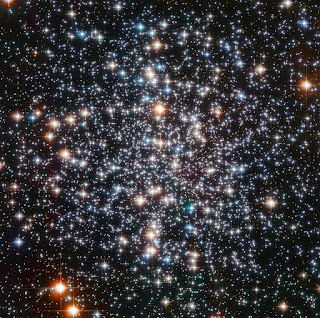Previous discoveries, such as 3XMM J215022.4-055108 and HLX-1, point to the existence of intermediate-mass black holes in dense star clusters at the fringes of other galaxies[3]. NASA's Chandra X-ray Observatory has been instrumental in identifying many possible intermediate black holes in globular star clusters orbiting the Milky Way, including a suspected one in Omega Centauri back in 2008[3].
Recently, Hubble's attention turned to the globular cluster Messier 4 (M4), where researchers detected a possible intermediate-mass black hole with a mass of approximately 800 times that of the Sun[2]. Although this mysterious object is invisible to direct observation, its presence has been inferred from the motion of stars orbiting it[2]. This groundbreaking discovery not only sheds light on the elusive intermediate-mass black holes but also paves the way for future explorations in understanding the origins and evolution of these cosmic giants.
A Hubble Space Telescope image of the globular star cluster, Messier 4. The cluster is a dense collection of several hundred thousand stars. Astronomers suspect that an intermediate-mass black hole, weighing as much as 800 times the mass of our Sun, is lurking, unseen, at its core. Credits: ESA/Hubble, NASA


Post a Comment